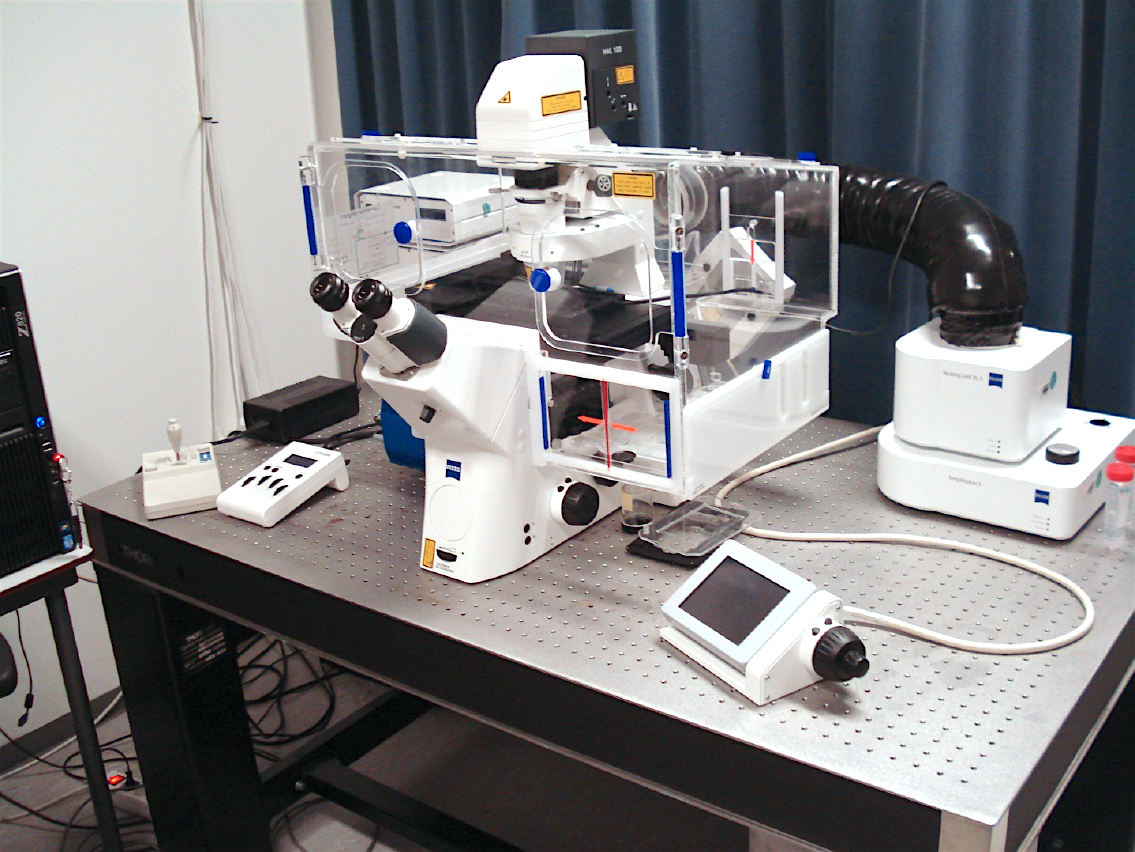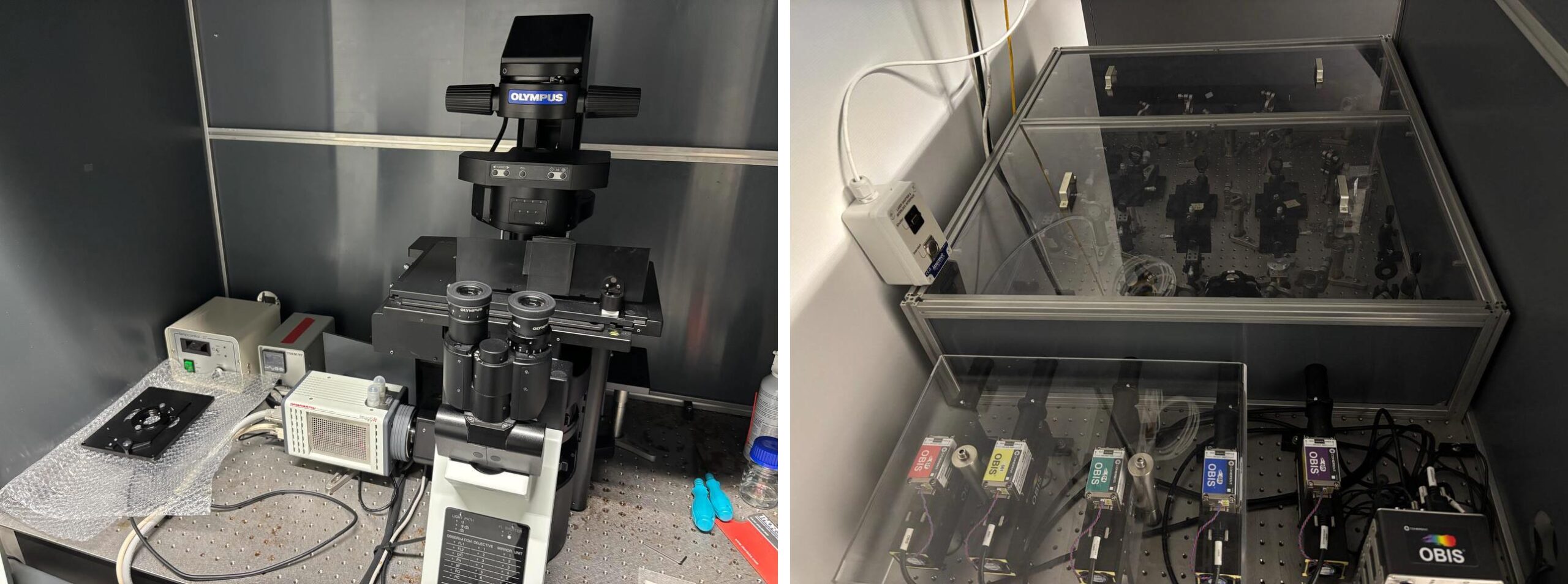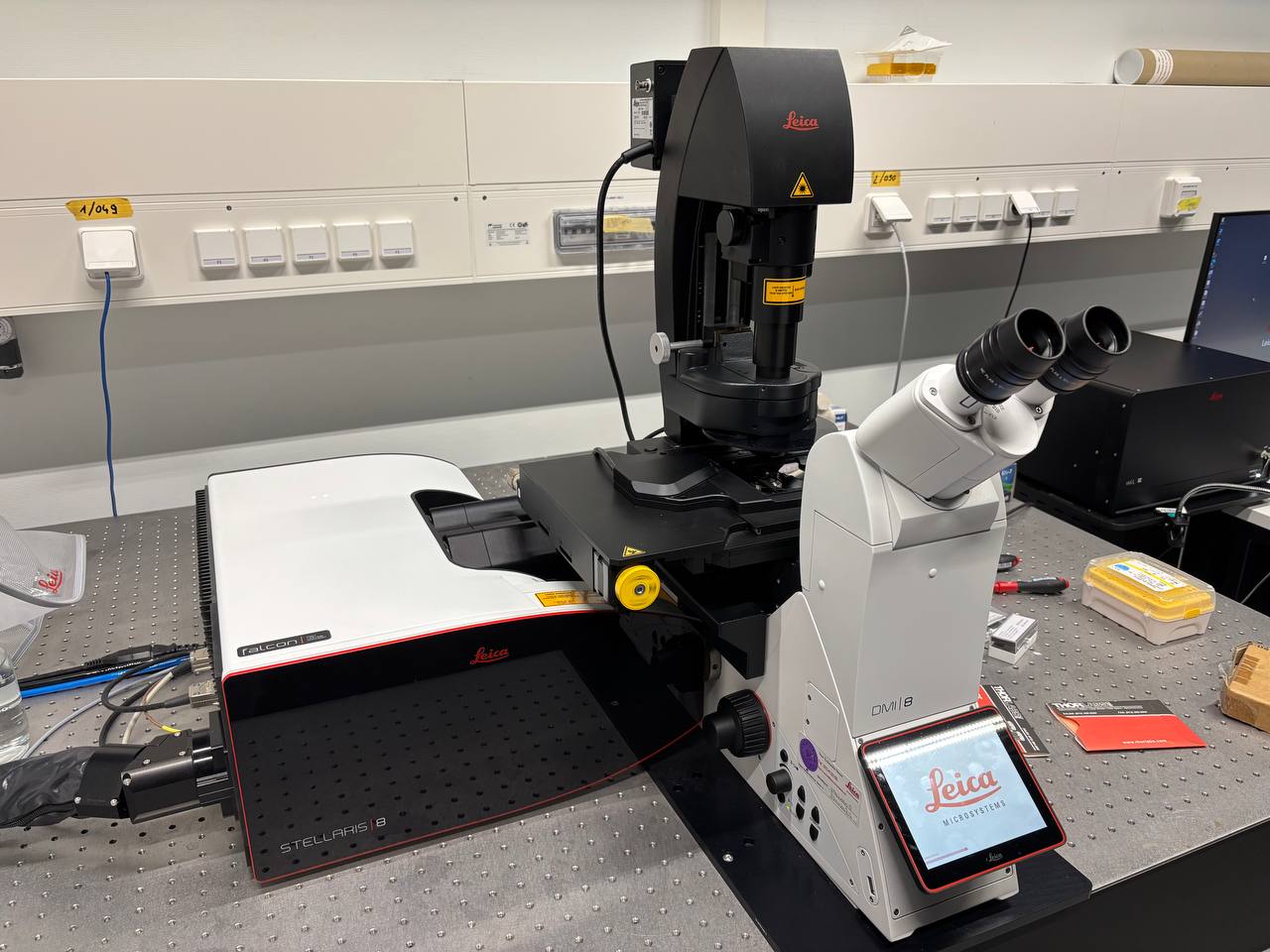STELLARIS 8, Leica
The laser confocal scanning microscope with four detectors (two HyD X, HyD S and HyD R) with photon counting capabilities and a While Light Laser (WLL) in a 440 nm – 790 nm range. Next to WLL, there is a solid state 405 nm laser. Objectives are 10x (0.4 NA), 20x (0.75 NA), 40x (1.3 NA), 63x (1.2 NA). This microscope comes without incubation chamber for temperature control.
Main Applications:
- CLSM (with TauSense Technology for lifetime-based signal unmixing)
- Fluorescence Correlation Spectroscopy (FCS) and Fluorescence Lifetime Imaging (FLIM)
- FRAP measurements
MicroTime 200 STED, PicoQuant
The MicroTime 200 STED is a time-resolved confocal microscope with single-molecule sensitivity and super-resolution capabilities. This microscope comes without incubation chamber for temperature control.
Laser Excitation Modules:
STED module contains 766 nm (STED laser), 595 nm and 640 nm lasers;
VIS module contains 440 nm, 485 nm and 532 nm lasers.
Main Applications:
- Stimulated Emission Depletion Microscopy (STED), optical resolution below 50 nm
- Single-Molecule Imaging
- Fluorescence Lifetime Imaging (FLIM)
- Fluorescence Correlation Spectroscopy (FCS)
- Lifetime-based Forster Resonance Energy Transfer (FLIM-FRET)
- Pulsed Interleaved Excitation (PIE)
Axio Observer, Zeiss
The Axio Observer employs LEDs (Colibri, Zeiss) as an excitation source of fluorescence. Currently, 365 nm, 470 nm, 505 nm and 625 nm LEDs and 20x (0.5 NA), 20x (0.4 NA), 40x (1.3 NA), 63x (1.6 NA) and 100x (1.4 NA) objectives are installed. DefiniteFocus monitors and reliably compensates focus drifts with a closed loop system. The microscope equipped with an incubation chamber for temperature control.
Main Applications:
- Long term bright field and fluorescence live-cell imaging
- FetmoJet 4i microinjector (optionally)

SMLM/SMdM Widefield microscope
The microscope is built around an Olympus IX81 inverted microscope and equipped with a Hamamatsu EM-CCD camera allowing single-molecule detection. Different illumination schemes can be used: Epifluorescence, Highly-Inclined and Laminated Optical sheet (HILO) and Total Internal Reflection Fluorescence (TIRF). ZDC (Z Drift Compensation) module monitors and reliably compensates focus drifts. Module for stroboscopic illumination. As fluorescence activation and excitation sources the following laser lines are used: 405 nm, 488 nm, 514 nm, 561 nm and 637 nm. Objectives are 16x ( 0.3 NA) and 100x (1.49 NA). Heating chamber for sample and objective heater can be installed.
Main Applications:
- Single-molecule localization imaging (SMLM)
- Single-molecule displacement mapping (SMdM)
- Time-lapse widefield imaging

smFRET-TIRF Widefield microscope
The microscope is built around an Olympus IX71 inverted microscope and equipped with a Hamamatsu EM-CCD camera allowing single-molecule detection. Beam splitter Photometrics DV2 (green/red, blue/red) installed before the camera to split the emission light from a microscope into two independent channels for single-molecule Förster Resonance Energy Transfer (smFRET) measurements. As fluorescence activation and excitation sources the following laser lines are used: 405 nm, 488 nm, 532 nm and 637 nm. Objective is 100x (1.49 NA). This microscope comes without incubation chamber for temperature control.
Main Applications:
- smFRET-TIRF measurements
- Time-lapse widefield imaging



